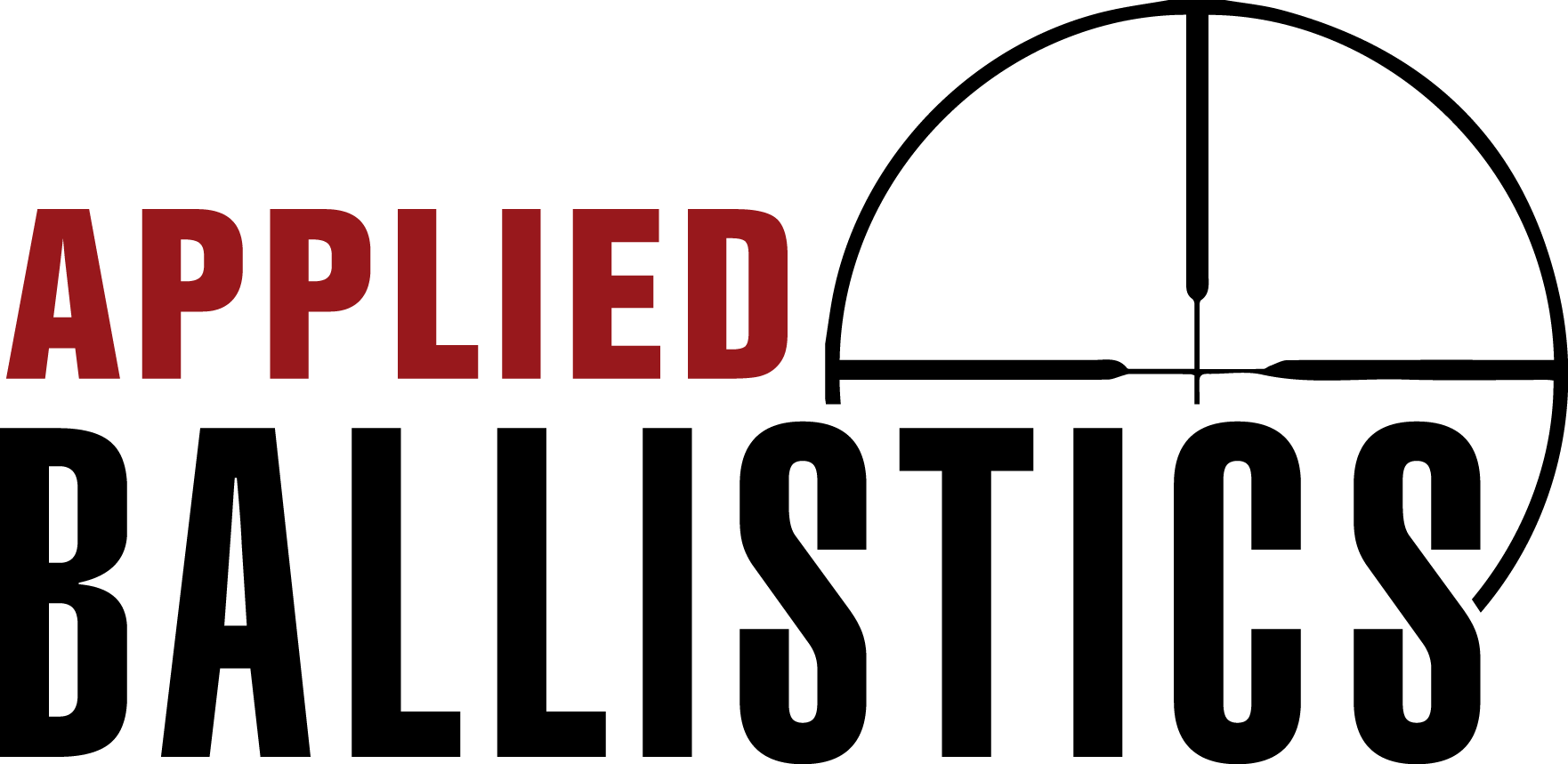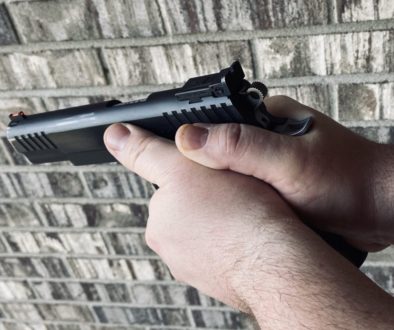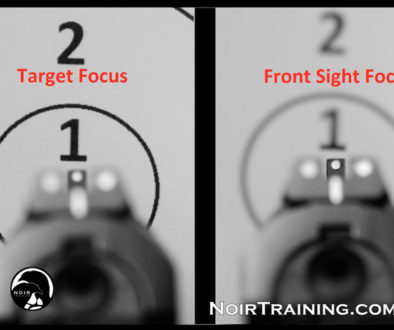Getting Started in Competitive Shooting – Part 2
Part 2 – Equipment
(If you missed Part 1 you can find it here)
Next we will talk about equipment. The second most common reason people give us for not trying out competitive shooting is that they don’t have the proper equipment. A quick look at a sponsored USPSA shooter or Multi-Gun shooter and you’ll see some very expensive guns and supplemental equipment like belts, holsters, and ammunition pouches.
While the gear described above is quite expensive, none of it is required to try out the shooting sports.
In order to talk about gear we must first discuss what type of competition a new shooter is interested in trying. Team Applied participates in USPSA, Indiana Multi-Gun, IDPA, and Steel Challenge so we’ll discuss those specifically, though there are many other shooting sports available.
The least expensive of those listed is Steel Challenge. In steel challenge you shoot strings of fire at stationary steel targets. You can do this with almost any firearm. They have divisions that mirror all the USPSA divisions (more on this later) as well as rimfire divisions. You can shoot Steel Challenge with a carry pistol, a night stand pistol, a full tilt race pistol, a pistol caliber rifle, or a .22LR rifle or pistol. About the only things you can’t use in Steel Challenge are shotguns and rifle caliber long guns. Basically anyone that owns guns is likely to have a firearm that qualifies for a Steel Challenge match. If you shoot a non-rimfire pistol you will need a strong side hip holster that meets USPSA requirements but a rimfire pistol or any eligible long gun will not require a holster or sling. You typically shoot 5 shot strings five times in a given stage so having enough loaded magazines avaiable to prevent having to stop and reload magazines during a stage is highly recommended and is likely the only additional equipment most shooters will need to try out Steel Challenge. A basic rimfire rifle like a Ruger 10/22 that sells for $240 and a few extra magazines at $18/ea ($40 for a 3 pack) and you’re ready to give Steel Challenge a try.
IDPA (International Defensive Pistol Association) is also fairly inexpensive to try out with only modest equipment requirements. Nearly any handgun from .380 ACP and up can be eligible for use. IDPA was formed with a focus on using handguns designed for concealed carry use so if you own a typical defensive handgun it will likely fit into one of the IDPA divisions. SSP (Stock Service Pistol) is dominated by polymer framed striker fired guns like Glocks, S&W M&Ps, Springfield XDs and XDMs, etc. It is also home to DA/SA (Double Action/Single Action) guns like CZ 75s, Beretta 92s, Sig Sauer 226s and 229s, etc. Most full size unmodified carry guns will fit into this category. The CCP (Carry Concealed Pistol) division is made up of smaller carry pistols like S&W Shields, Glock 43s, Springfield XDSs, and small 1911s. This division was made with the idea of having people compete with their actual daily carry guns as most people don’t carry full size service models that you see in SSP. CDP is a division dominated by full size 1911 pistols chambered in .45 ACP. The 1911 has a long history in competitive shooting and if you own one you probably understand why. The 1911 has its own division in IDPA. ESP (Enhanced Service Pistol) is where slightly modified or high performance service pistols are used. People who modify their Glocks or S&Ws for improved performance or people who shoot high performance pistols like STI 2011s compete in this division. This is the division where it can start getting expensive to compete and I don’t recommend ESP for new shooters unless they already happen to have a gun that falls into this category, such as a 9mm full size 1911. Revolvers have their own division so if you happen to have a .38 or .357 revolver it is at home in IDPA, though most shooters choose semi-automatics. If you use a revolver don’t forget the speed loaders, you will need several. The last division we’ll talk about is BUG (Back Up Gun). This division was designed for small pocket pistols and is the only division .380 ACP is legal (most use 9mm or larger). This is where you would shoot a Glock 42, a S&W Bodyguard, or a Ruger LCP. While an interesting division that includes truly tiny concealed carry guns, these guns are more difficult to operate in a competition and I wouldn’t recommend them for beginners unless that is all you have. For most shooters I would recommend starting IDPA with whatever gun you have currently but if you are looking to buy a gun for this something like a Glock 17 or 19 would be a good choice. The Gen 4 Glocks generally cost around $550 and come with the three magazines you will need. Less expensive pistols like a S&W SD9VE ($330) are also usable but will require the purchase of additional magazines for around $40 each. Other equipment needed will be a belt (you do have a belt right?), a strong side hip holster ($40-$80), and a weak side magazine carrier ($30-$40). You will also need a “cover garment”. Since IDPA is designed to mimic concealed carry you have to wear a shirt or vest that covers your handgun when it is holstered. Something as simple as an untucked T-shirt can be used or you can use an untucked button down shirt, jacket, or vest. IDPA scoring favors accuracy, which tends to favor slower more deliberate shooting compared to some other disciplines. It also has shorter courses of fire with simpler equipment so it is a great place to start.
USPSA (United States Practical Shooting Association) is less about concealed carry and more about speed. That doesn’t mean you have to shoot fast, and I don’t recommend you shoot fast as a beginner (refer to Part 1 of this blog), but the scoring is set up so that it favors high speed shooting. This is the sanctioning body that produces the videos of guys in fancy shirts shooting pistols with optics and compensators at blazing fast speeds. What these videos don’t show are the other 95% of shooters that are everyday shooters, wearing jeans and t-shirts, shooting their carry pistols. The equipment required is not much different than that of IDPA, and if you have equipment for IDPA you will likely have what you need for USPSA. SSP in IDPA usually fits into Production division in USPSA. CDP in IDPA usually fits into Single Stack division in USPSA, though you can use different calibers in USPSA. For example, a 9mm 1911 fits into ESP in IDPA but Single Stack in USPSA. ESP pistols in IDPA fit into Limited in USPSA, though USPSA allows larger magazines that typically hold 18-20 rounds of ammunition (IDPA only allows a max of 10 rounds per magazine). Limited in USPSA is where things can begin to get expensive. This division is dominated by high performance guns like the STI 2011s which begin around $2000. While they are fantastic guns, I don’t generally recommend them for beginners. USPSA also has an Open division. This division allows guns that are completely off limits in IDPA. These guns have compensators, red dot optics, and require special holsters and rigs. You can tie up $4000-$5000 pretty easily on one of these setups.
The other equipment needed isn’t much different than IDPA, though the advanced divisions of USPSA allow holsters and gear that can be far more expensive. A normal belt, holster and magazine carrier used in IDPA is right at home in USPSA Production division. One thing to keep in mind is that the stages in USPSA typically have a higher round count than those in IDPA. If you are shooting a division with low capacity (such as a 1911 in Single Stack Division) you will need additional magazines and carriers. A 32 round course of fire with 8 round magazines means an absolute minimum of 4 magazines assuming your shots are perfect and no make ups are needed. Most single stack shooters carry 5 or 6 extra magazines on their belts. If you shoot limited, where you can load magazines up to capacity (up to 20+ if you buy extended mags) then two magazines on your belt will likely be plenty. If you have a Glock 17 with 17 round magazines you can shoot it in Production and only load to 10 rounds, but will need extra magazines, or you can shoot it in Limited and load to capacity. Shooting Limited just means that you will be scored against people shooting much fancier gear. But you aren’t trying it out expecting to win (see Part 1 of this blog) so that doesn’t matter and allows you to participate without buying extra gear. With this in mind, trying out USPSA doesn’t have to have any additional gear cost over IDPA.
Indiana Multi-Gun, our state’s version of 3-Gun, requires a bit more equipment than the other disciplines. For starters, you have to have three guns. A handgun usable in IDPA or USPSA is fine in Multi-Gun but you will also need a shotgun and a rifle. Most shooters use an AR pattern rifle as they are well suited to the type of shooting done in Multi-Gun while being common and relatively inexpensive. The shotgun is where most people get hung up. A standard low capacity shotgun like a Remington 870 is not well suited to Multi-Gun. The vast majority of competitors use a semi-automatic shotgun with at least an 8 round magazine tube. This is a bit specialized for most beginners but you don’t have to have one. If you use something like an 870 with a 4 round magazine tube expect to spend quite a bit of time reloading your shotgun during stages of fire. Since we don’t care about time (refer to Part 1 of this blog) that doesn’t matter.
The divisions in Multi-Gun are a bit looser with divisions having a larger variety of guns usable. It is worth mentioning that if you shoot a rifle that qualifies as Open division, you shoot Open even if your shotgun is the previously mentioned 4-shot tube 870. A full tilt Open division setup for Multi-Gun can cost more than some cars but starting out I recommend using what you already have. If starting from scratch you will need a basic pistol like the Glock mentioned earlier ($550), holster ($40-$50), pistol magazine carrier ($30-$40), AR rifle ($600), AR magazines ($15 x 2), shotgun ($370), shotgun shell carriers ($35 x 2), cases for both long guns ($30 x 2), and a cart to lug all your stuff around ($80).
Competitive shooting is like any hobby, you can spend as much as you want on it. Unlike some other hobbies, however, it doesn’t have to be prohibitively expensive. Most people reading this probably already have most of what they need (the gun is the most expensive part) to get started. If you don’t, but you know people who shoot competitively, odds are they would loan you whatever you needed to try it out. Competitive shooters really are a great group and growing the sport is high on their priority list. Don’t hesitate to ask a friend, or stop in at Applied and speak with Aaron or Dan about it.
Now that we’ve discussed the reasons most commonly given for not trying out the shooting sports, Part 3 will be about match safety rules and generally accepted etiquette. We’ll make sure you know what you need to know so that you don’t get yourself in over your head your first time out.
Aaron




July 19, 2017 @ 4:29 pm
Thanks, great article.